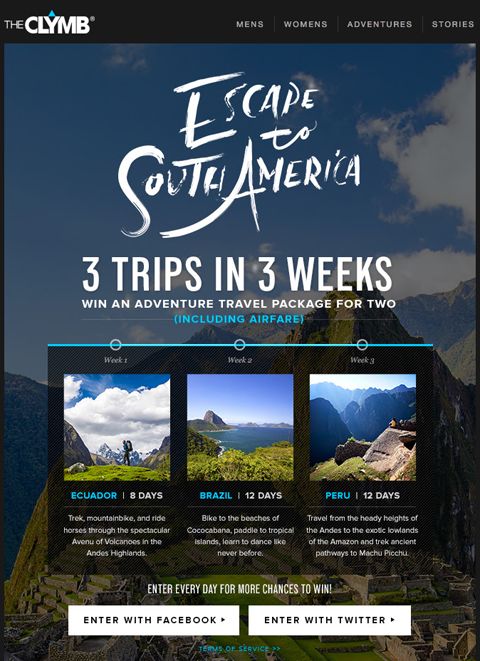Brands send 23 promotional messages on social media for every one response they give to their audience. Yet, consumers often want to have a dialog on social; and when that doesn't happen, customer loyalty and retention decline.
Clearly, spray-and-pray messaging is a failing strategy for customer satisfaction and retention. There is a superior approach that brings the best of traditional loyalty programs to social media, and vice versa.
Read on to learn how to apply loyalty best-practices to your social media marketing to grow customer retention and long-term loyalty.
1. Know your customers
Airlines and hoteliers do an exceptional job of knowing their customers and recognizing them. If you've ever been given a complimentary room upgrade due to your status level, or if you've been on a flight when a million-mile traveler was recognized, or if you've been simply thanked at check-in for being a loyal rewards member, you know what I'm talking about.
The digital equivalent is not as big of a stretch as you might think, and it can have just as lasting an impact.
The first step is to recognize your loyal customers online. Do so by capturing their social IDs alongside self-identifying information, like an email address, and connect the two in your CRM or another database. A best-practice is to encourage participation in a social campaign that requires a conversion activity where participants opt in and provide their information.
"Socializing" an existing email list is a good way to do that. In the following example, The Clymb sent an email promoting a contest with entry options on Twitter and Facebook. When recipients entered, The Clymb was able to link email with their social ID, and as a bonus was also able to determine the social channel of choice for their customers.

Once you know who your customers are on social, you are well on your way to being able to recognize them.
2. Surprise and delight your customers
Once you know who your loyal customers are in the social context, you can actively listen for certain keywords or social actions that, when triggered, receive a tailored response designed to surprise and delight. This type of one-to-one communication is growing in importance as customers become more demanding of the brands they do business with.
The strategy to surprise and delight can even start in a social channel and move to a physical one in support of specific marketing goals.
For example, a restaurant brand knows customer "Beth" from a socialized email offering. Beth is a frequent customer at this restaurant chain, and on this day checks in over social. The restaurant is listening for these actions and connects it with Beth's information in its CRM, automatically recognizing her as a loyal customer. As a way to surprise and delight Beth, the brand sends her a personalized email thanking her for her business and rewarding her with a free nonalcoholic beverage with the purchase of a dessert item.
Beth is happy, and the restaurant has driven an add-on sale. Indeed, 84% of consumers would spend more with retailers that offer programs that reward them for social and other nonpurchase actions.
3. Provide utility
With ever-decreasing attention spans and available time, consumers demand greater utility from brands. Accordingly, those brands that make engaging and doing business with them easier—on all channels—will be the winners of greater loyalty and customer lifetime value.
Brands must start by connecting the channels where consumers spend their time to existing business systems and processes. They can then use those channels to provide utility.
Consider that as of the end of 2015, 68% of Americans owned a smartphone and people spend the plurality of their mobile time on social media. Couple that with the fact that three-quarters of American women interact with a brand digitally multiple times a week—most often on their smartphone—and it's clear that there is a large opportunity for marketers to use social media as a mechanism to turn the smartphone into a remote control for conversion.
Providing utility and a fair value exchange is the key to driving those conversions.
Traditionally, brands have approached the loyalty equation with points, but research featured in the International Journal of Hospitality Management found that "providing social rewards [e.g., a member-exclusive personal lounge, health club, concierge services, and invitations to special events] increases customers' emotional attachment and effective commitment to a company, and hence they are more likely to behave in ways that are beneficial to it." This insight is important as brands look to create a value exchange that converts in social media.
Successful ideas for creating value in exchange for social participation and loyalty include invitations to social VIP only events, free upgrades or sneak peeks, unique or exclusive content, and the opportunity to engage with a brand celebrity.
As you brainstorm campaign ideas, the question to ask yourself simply is, "Would I continue participating with this company in exchange for this reward?" If the answer is no, go back to the drawing board.
4. Measure your customer loyalty and retention
As with any marketing program, include measurement to gauge success. Brands should outline goals and metrics for the following:
- Engagement and conversion: Measure and benchmark what rewards work best for the brand and what social platforms and actions drive the most engagement, conversion, and earned media in the form of valuable impressions.
- Customer acquisition: Participation within loyalty programs when social media is included has been proven to help brands acquire more customers. How does your social loyalty customer acquisition compare?
- Ongoing participation: Frequency of interaction can be a self-reinforcing loop of participation, engagement, loyalty, and advocacy. As a result, brands should look to measure participation rates as a forward-looking measure of loyalty and advocacy.
- Brand-specific goals: By linking social IDs to their CRM or e-commerce system, brands can measure business-specific outcomes such as in-store sales, basket size, repeat visits, and more.
* * *
According to L2Research, 90% of loyalty program members desire communication with the programs in which they participate. And with so much consumer communications happening over social mobile, marketers would be wise to embrace and apply loyalty best-practices, utility, and a positive value exchange to social media.
Today's consumers are busier and savvier than ever. They yearn for utility from the brands they do business with, something that spray-and-pray marketing or advertising simply does not provide.
The marriage of social media and customer loyalty and retention marketing will result in ongoing loyalty for brands, gain them important customer data, and increase customer lifetime value.
More Resources on Customer Loyalty and Retention
How to Measure and Improve B2B Customer Loyalty
The Loyalty Loop: How Small Things Add Up to Big Business [B2B Backstage]
Customer Retention: How to Assess and Improve Your B2B Customer Lifecycle




